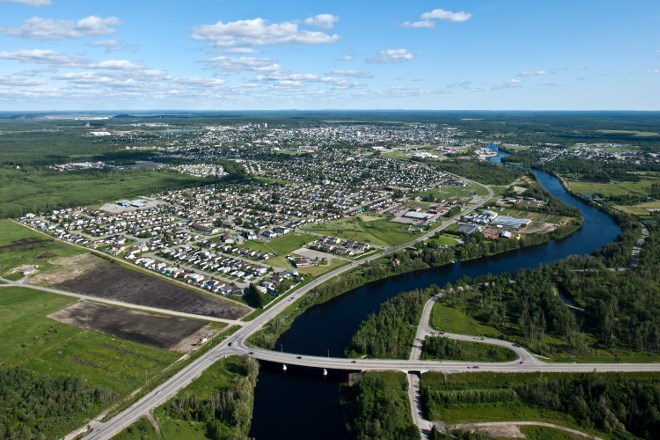The City of Timmins is hoping to entice new development to the area with a suite of incentive programs devised to lower the cost of construction and sweeten the case for building in Timmins.
In June, city council adopted the Commercial and Industrial Community Improvement Plan (CIP), which aims to develop brownfield sites, encourage mining redevelopment, and promote the city’s underutilized Timmins Industrial Park.
The city consulted with stakeholders and reviewed similar programs in other cities, including Sudbury, North Bay, Cornwall, Thunder Bay and Sault Ste. Marie.
“We do have a lot of brownfields, and there is expansion going west from Timmins,” said Dave St. Onge, a community development planner with the City of Timmins. “In order to promote development within the centre core, or the existing lots that are underdeveloped, we decided to implement a program to assist those.”
Three programs make up the CIP: the Commercial and Industrial Redevelopment Program, to help redevelop brownfield sites; the Mining Redevelopment Program, to help spur development on former mine or mining-related properties; and the Timmins Industrial Park Development Program, specific to the city’s industrial park, in the core of Timmins.
Once developers qualify under one of those programs, they can apply for three different grants – or a combination, depending on their eligibility and program requirements – to ease the burden of development.
Under the Tax Increment Rebate Grant, builders can qualify for an incremental tax increase, based on difference in value of the project, pre- and post-development, as evaluated by the Municipal Property Assessment Corp. (MPAC).
For example, if a property is worth $1 million today, and a developer completes a $2.5-million redevelopment project, with the property worth $5 million for five years, the developer will receive a decreasing value on the $4-million difference, St. Onge said.
Under the Environmental Study Grant, builders developing land with contaminants can receive funding to help cover the cost of site remediation – up to $5,000 for a Phase 1 environmental assessment, and up to $10,000 for Phase 2 or Phase 3 environmental assessments, or risk management plans.
Under the Municipal Fee Rebate Program, developers can receive refunds for planning and building fees. Eligible grant applications will be received and approved on a first come, first served basis.
The city is particularly keen to attract tenants to the industrial park and infill the Timmins core.
“We have no tenants yet, and that’s why we’re trying to promote the development,” St. Onge said. “Anything more than $5 million will be eligible for the tax increment rebate, and they will get rebates on their planning and building fees.”
Mining development, too, is big on the city’s radar. For developments with a value between $50 million and $250 million, developers would get a 10-year tax increment rebate, for developments with a value between $250 million and $500 million, it would be 15 years, and anything coming in at more than $500 million would qualify for rebates over 20 years.
“That one is a very substantial development,” St. Onge said. “That’s not mom and pop putting a new store on their property; that’s a substantial development that would bring an influx of jobs.”
He said it’s a common misconception that the city is losing money or that private developers are getting a discount on development fees when incentives are provided.
The city doesn’t get anything in taxes if a plot of land remains undeveloped, and the incentives give a builder a bit of a leg up in getting their business started, St. Onge reasoned. In years one and two, they may pay, say, $10,000 in taxes, but by the following year, they could be paying $20,000, depending on the value of the development.
“The other thing to consider is that the business may not relocate here without that, or they may not develop the site without the incentives, or they may relocate out of town and we lose that tax base,” St. Onge said.
“Our major mining companies have been around a significant period of time and there are obviously windows on these developments, so if we can attract another industry or something else, it’s better for the city.”
Typically, major industrial developments bring with them good-paying jobs, which creates an economic spinoff in the community as workers spend money locally. That’s why he calls the new CIP “a really good program for the City of Timmins.”
“It helps promote jobs, and it helps promote development, especially in areas where the infrastructure’s already there, and it helps promote properties people might consider as derelict or decaying, so it could spur additional development in those areas.”




